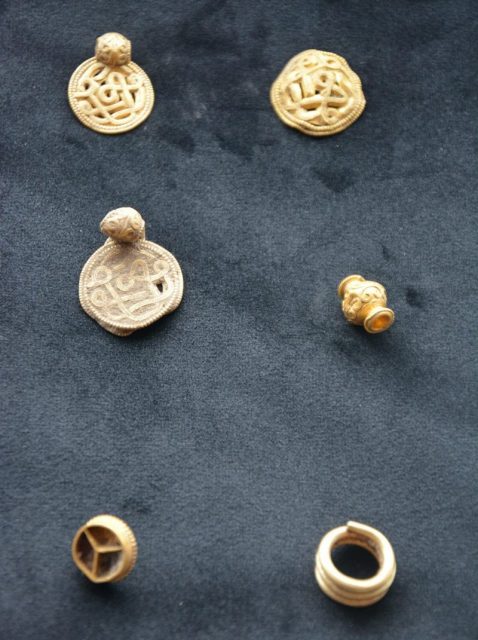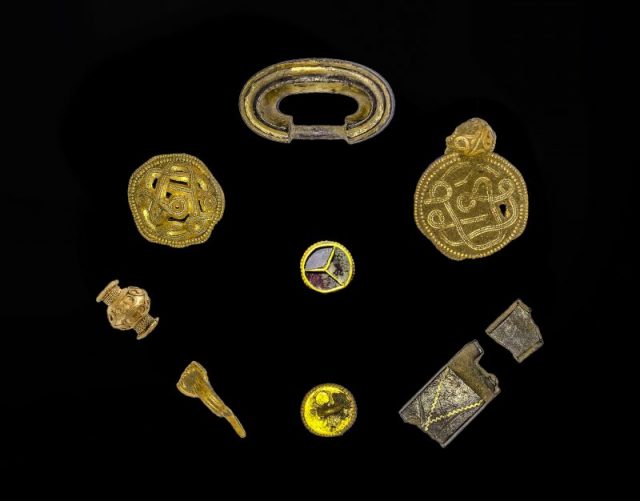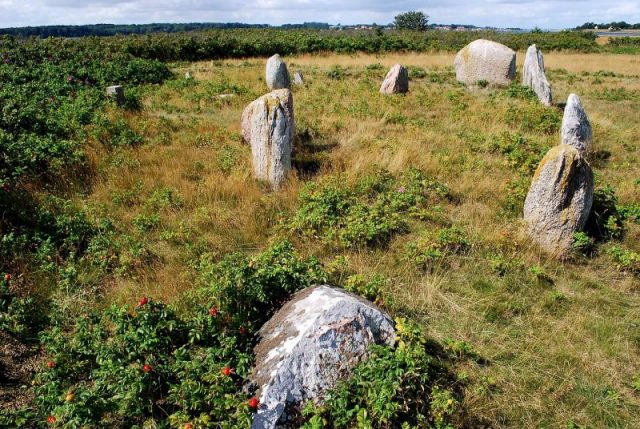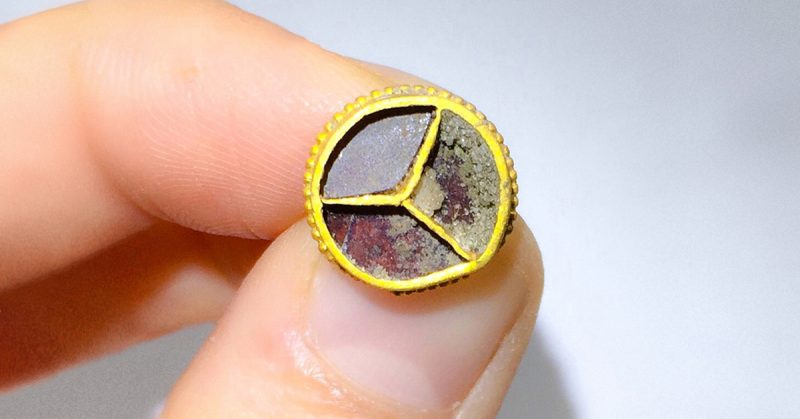After years of discovering next to nothing in her searches as an amateur archaeologist, a Danish dental assistant from Aarhus found more than 30 pieces of historically significant jewelry, including gold and pearls, in a muddy field on the island of Hjarnø.
Mads Ravn, the research head at Vejle Museums, said the gold was believed to date to a time in the 6th century, just before the Viking period began.
“Years can go by without amateur archaeologists finding gold, and some never do, so this is amazing,” the lucky woman, Terese Refsgaard, told DR. The gold included beads, pendants, a needle, and small pieces that were most likely used as currency.

Her discovery was made in 2017. Since then, professional archaeologists have worked the scene and secured more. Of 34 objects found, 27 of them are pure gold.
The find suggests that people from Hjarnø had some contact with the Roman Empire.
The island already had a rich history, with arrowheads found dating back many, many centuries, and artifacts washing up on the shore. On the southeast side of the island the ocean eats into the coast, leaving steep cliffs. On the southern part of the island are trails for hiking.

Scientists are speculating that the Hjarnø gold treasure was an offering to please some “angry gods.”
People connected to the Romans “probably took part in raids there, so our find is a small legacy from a turbulent time in world history in which gold speaks its own clear language,” Ravn told DR.
The Roman connection comes into focus because of certain jewelry patterns and designs, the head of research said. “In terms of craft, they are completely unique, with gold markings that almost form spirals,” he said. “That is evidence of a high level of skill.”

One researcher who wrote on the find for Phys.org said, “We think that it was a typical offering made in the hope that the gods could help those who buried the treasure through a difficult time. And we know that it dates to the 6th century. Was it intended to appease angry gods and end the poor summers and dark skies following the El Salvador volcanic eruption?”
“Or was it thanks to the ultimate collapse of the Western Roman Empire a few decades earlier, whereby the gold was brought to Denmark by returning ‘new rich’ aristocrats, who defined a new ritual practice and religion based on the Nordic Gods?” the researcher pondered. “We do not know.”
The volcano in question erupted in El Salvador in 536 AD. The massive event could have instantly killed up to 100,000 people, displaced up to 400,000 more, and filled the skies with ash for over a year. Its effects were felt far beyond El Salvador, too.

“The sun gave forth its light without brightness,” wrote the Byzantine historian Procopius, “and it seemed exceedingly like the sun in eclipse, for the beams it shed were not clear.”
There are questions about the next stage, but some scientists believe the eruption led to an extensive, though short-lived, climate change experienced across the northern hemisphere.
In Denmark, there would have been poor summers and failed harvests.
Numerous Roman sources describe the sun as dark during the day and, according to the 6th century Syriac Chronicle, there was “great despair among the people.”
The Western empire was already disintegrating. The last Roman emperor, Flavius Romulus Augustus, ruled the Western empire for just one year, ending in 476 AD.
The Viking age started in 793 and lasted until 1066. The Vikings come from Scandinavia, with Denmark considered its spiritual and historical home. On the island of Hjarnø, a preserved Viking ship is an attraction for visitors. The Kalvestenene is on the peninsula called Odden, believed to be a cremation burial site of the Vikings.
The gold discovered on the island is now at The Vejle Museums.
